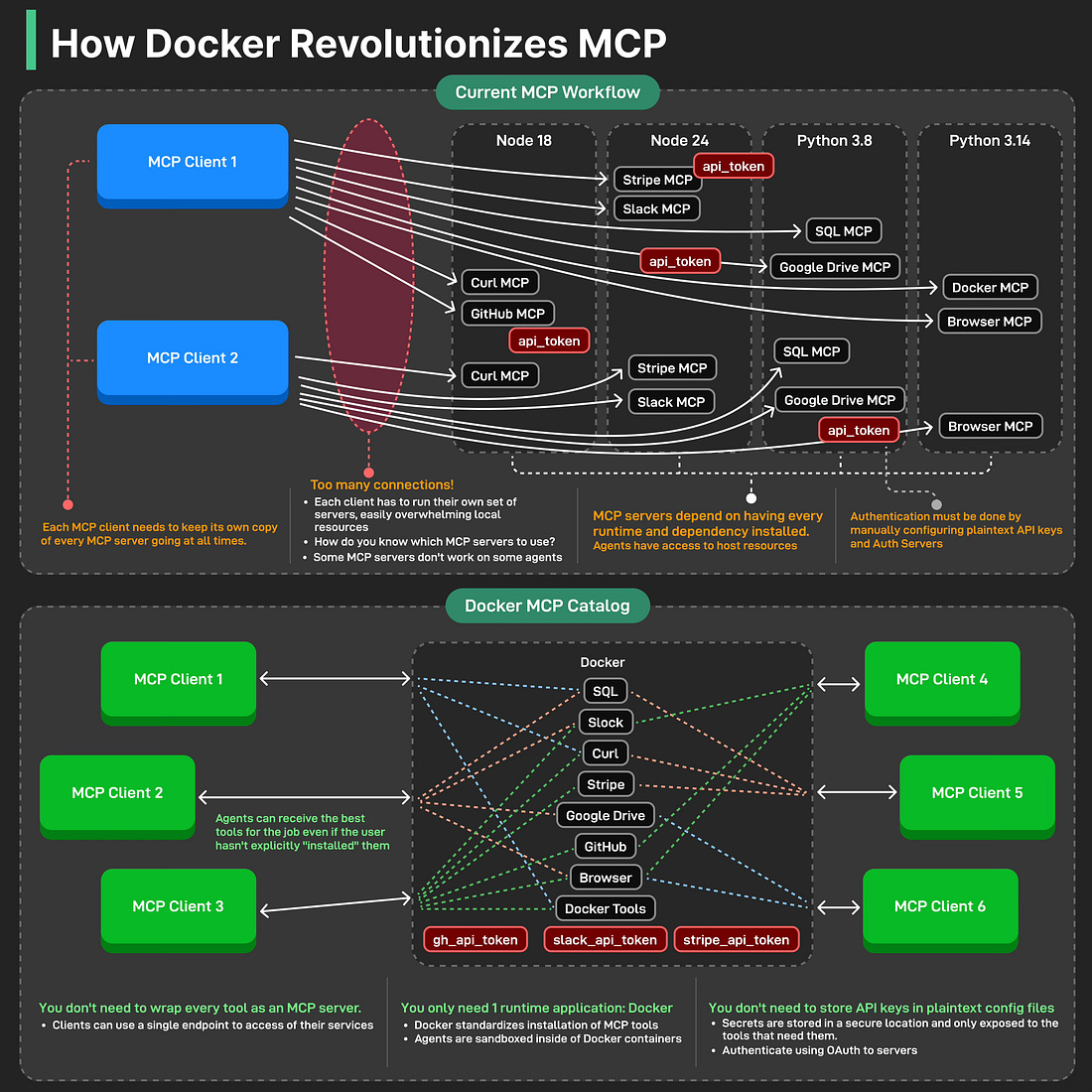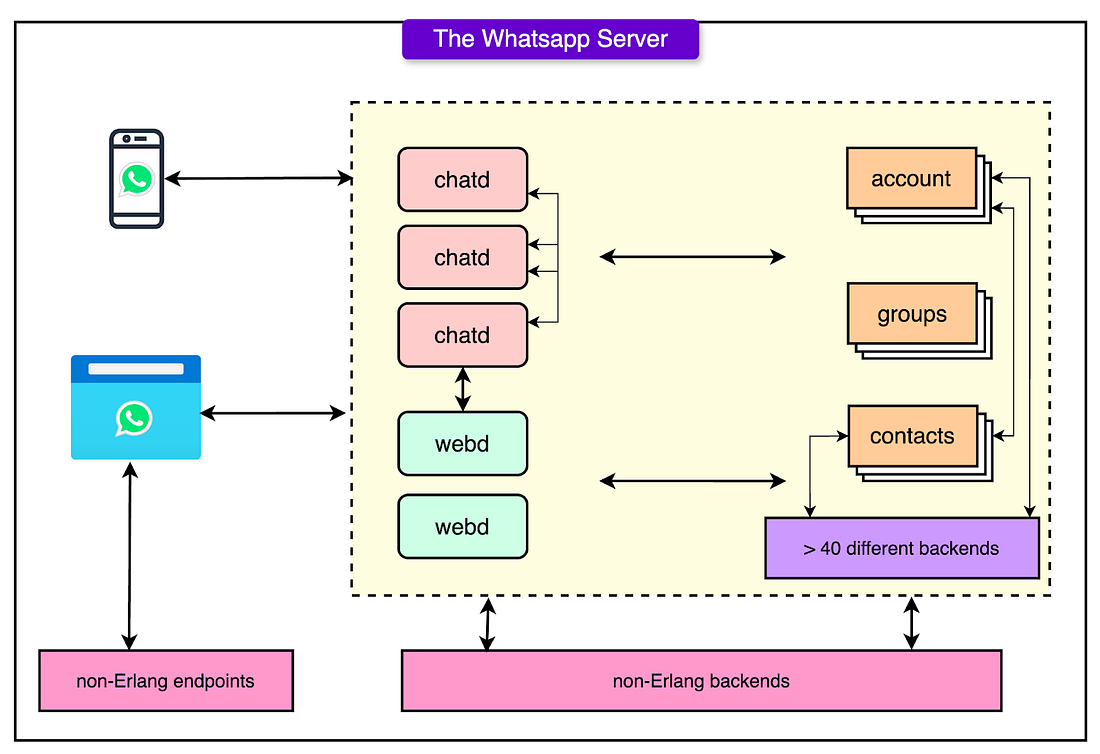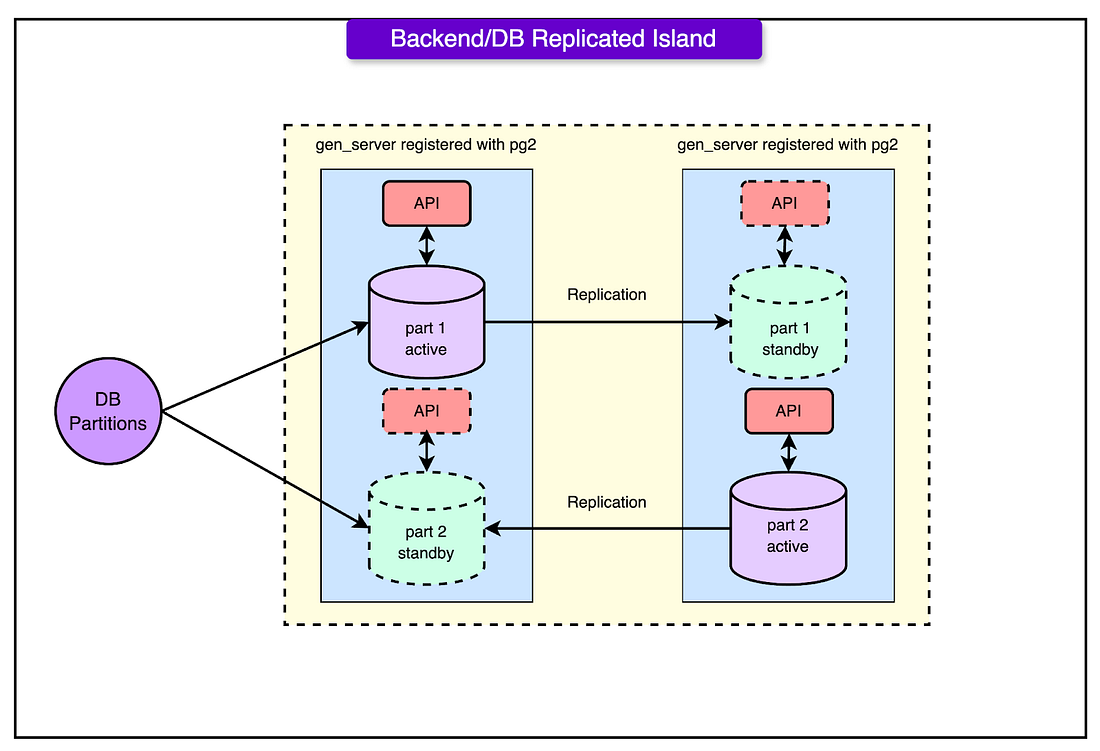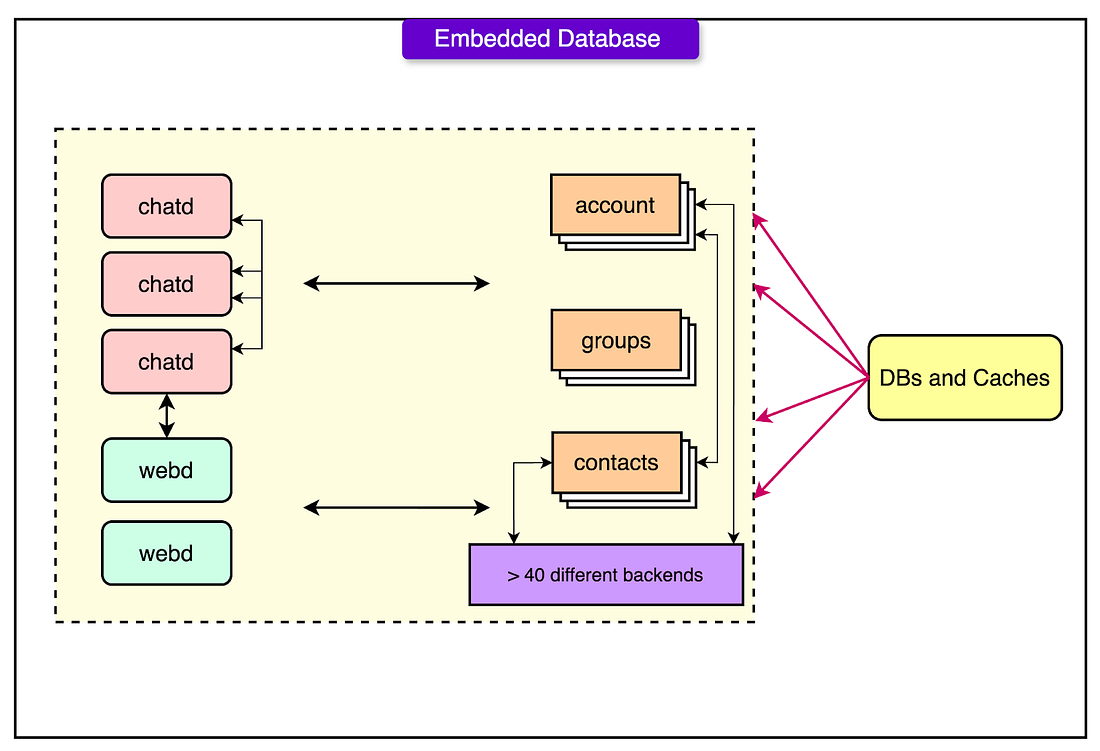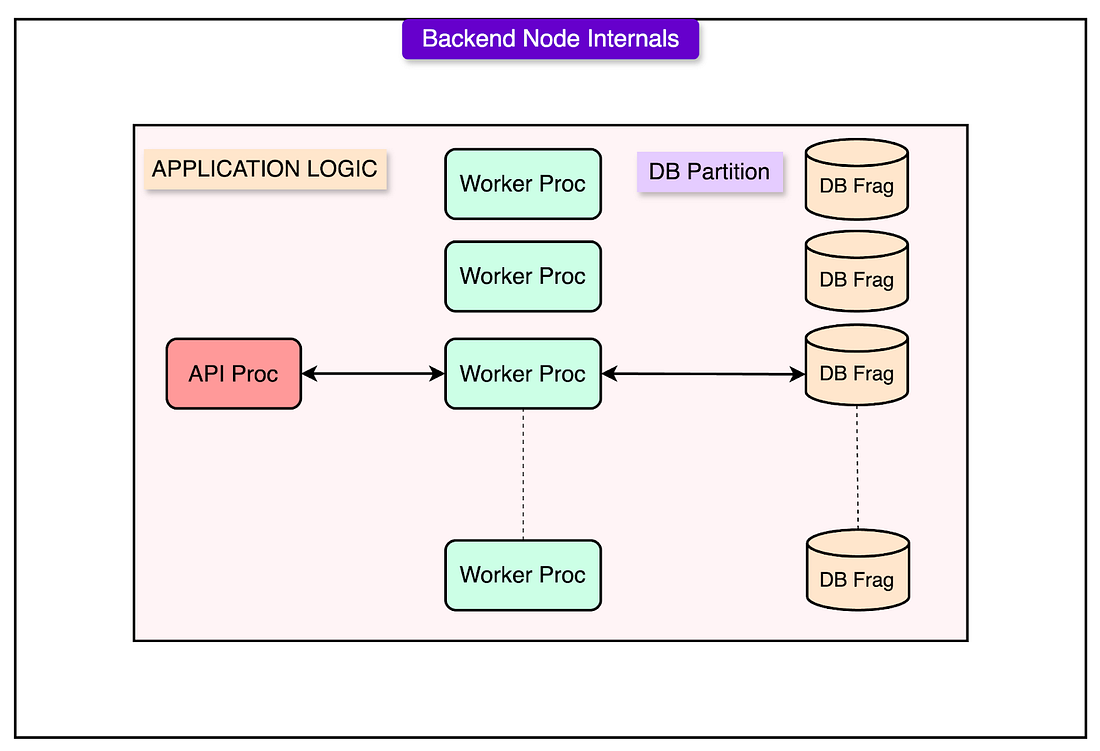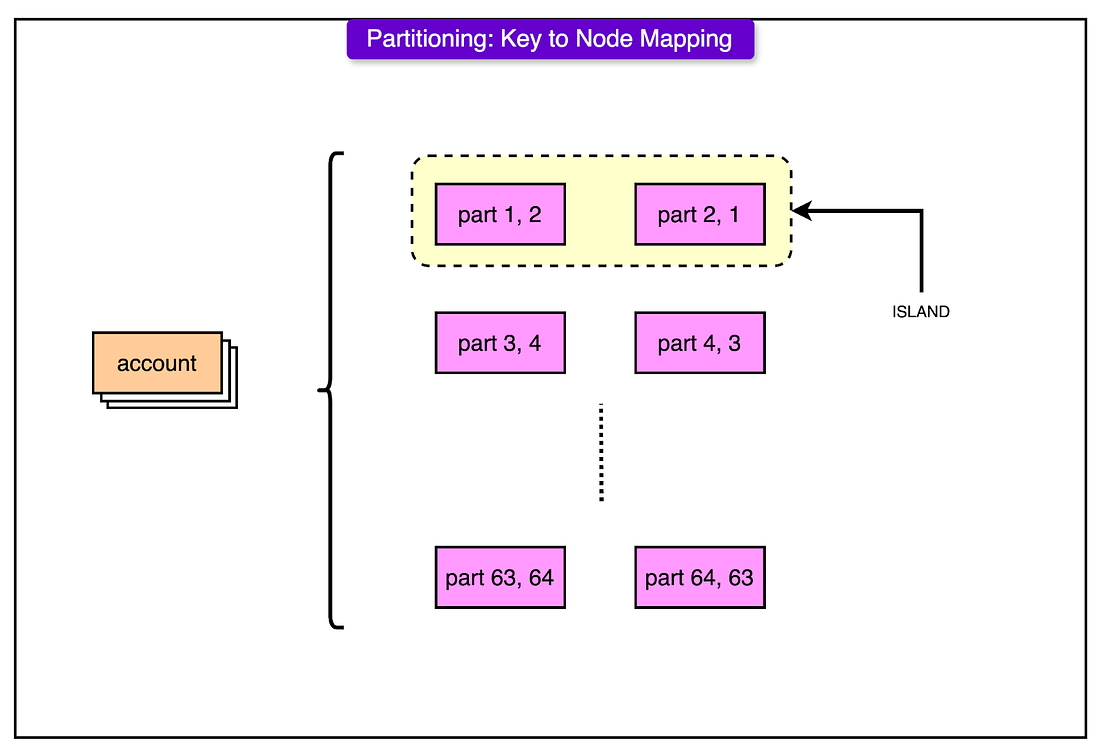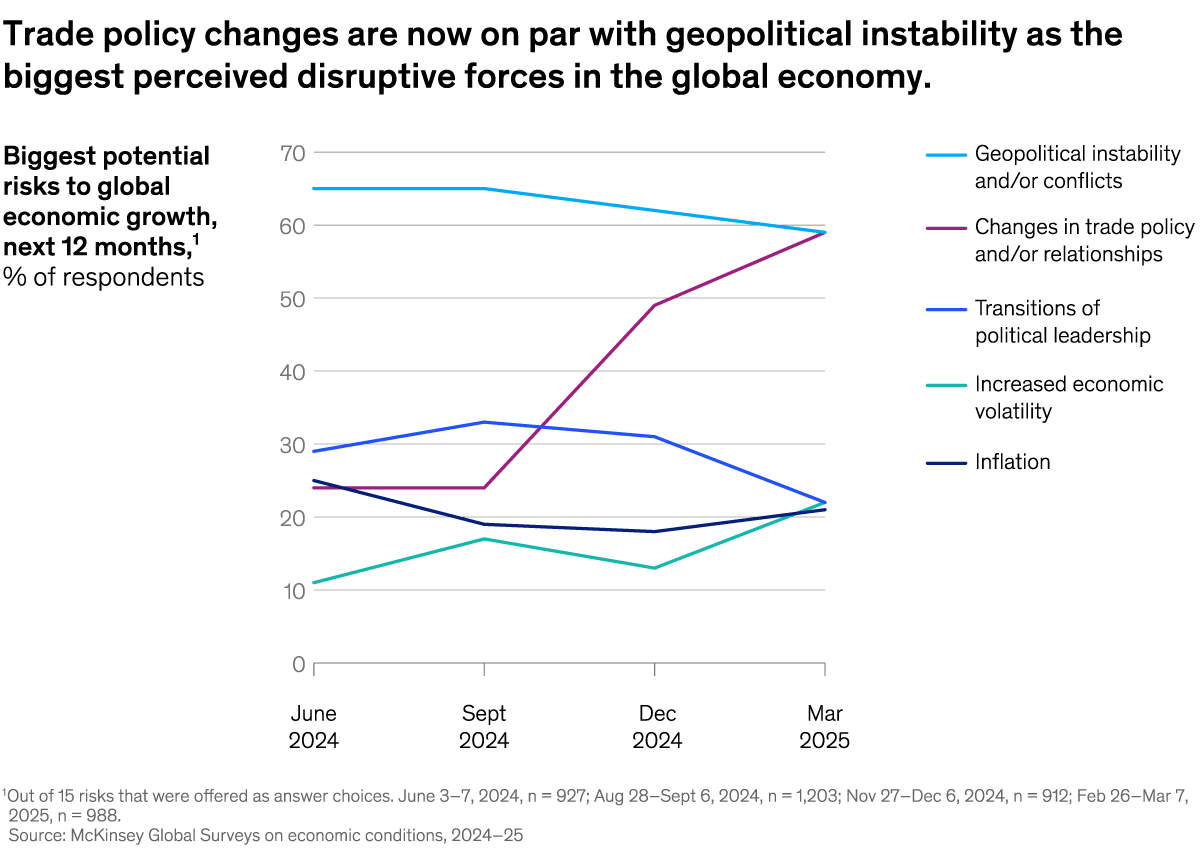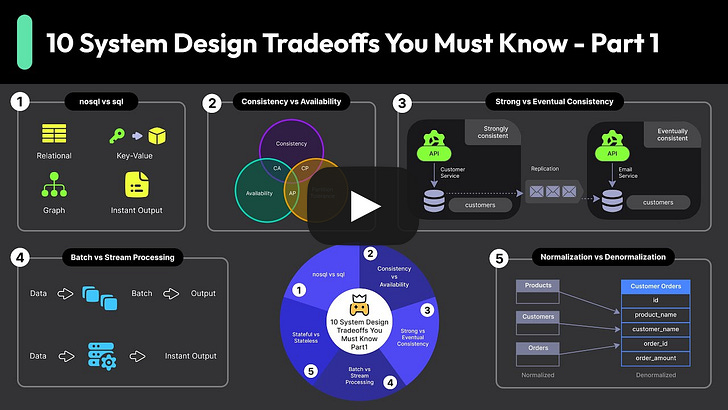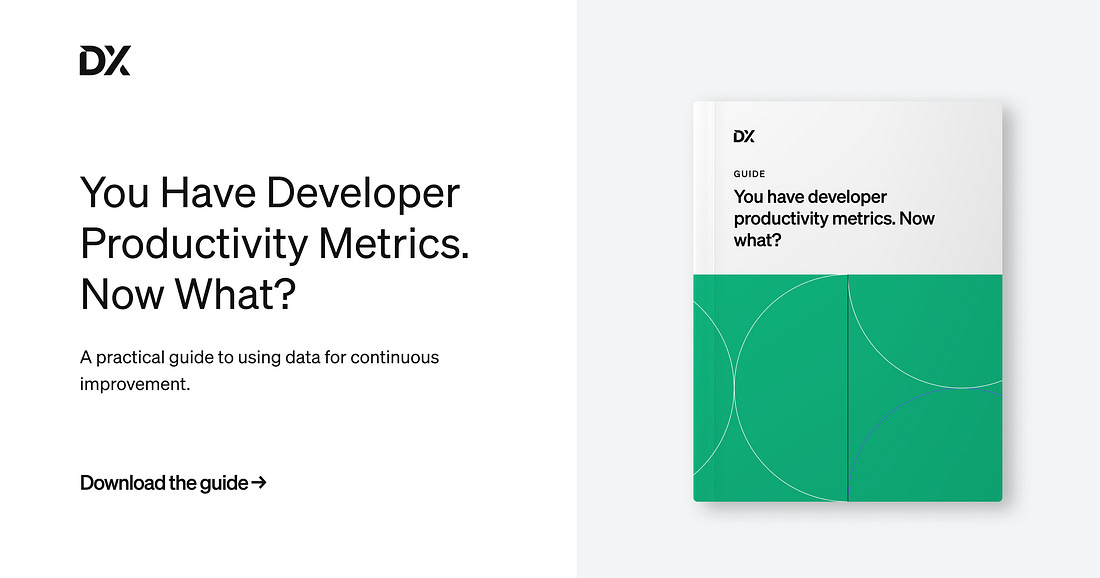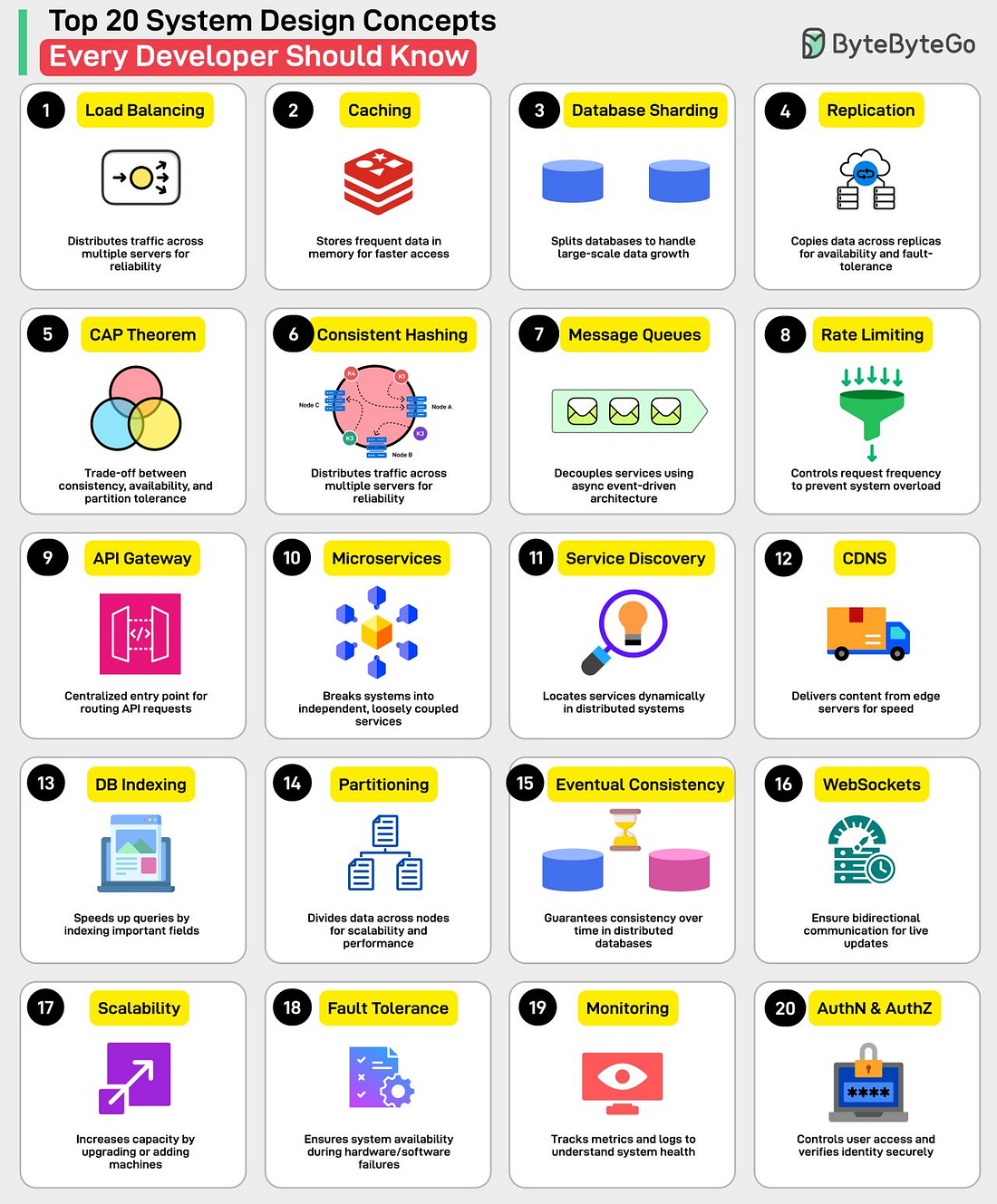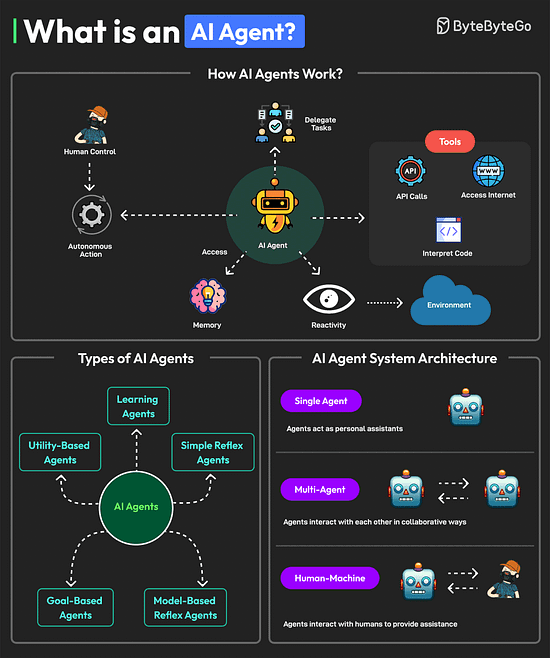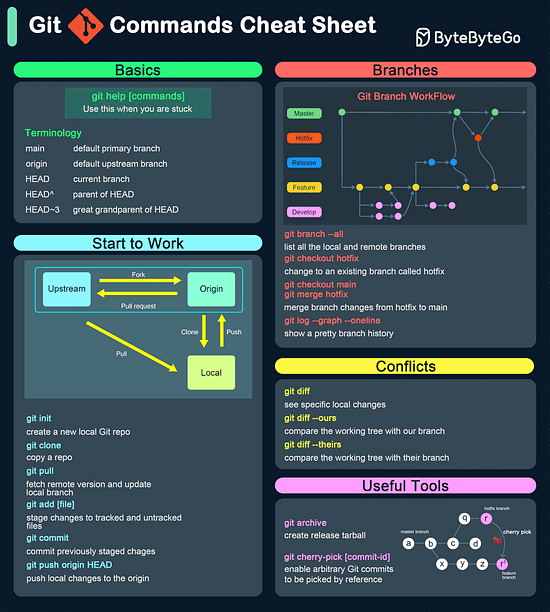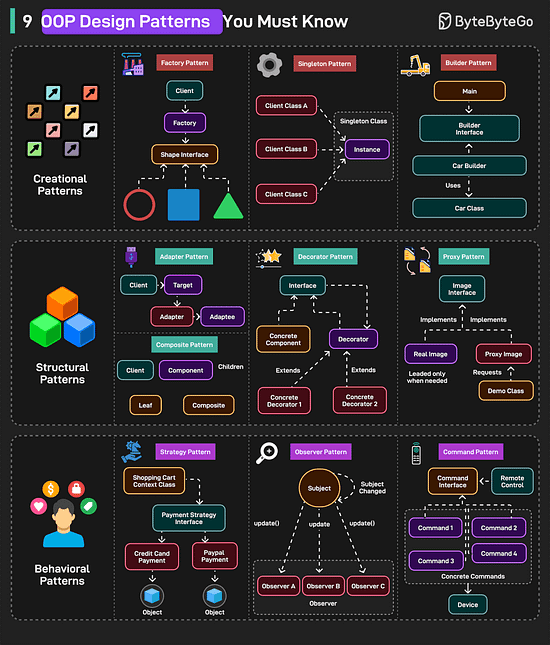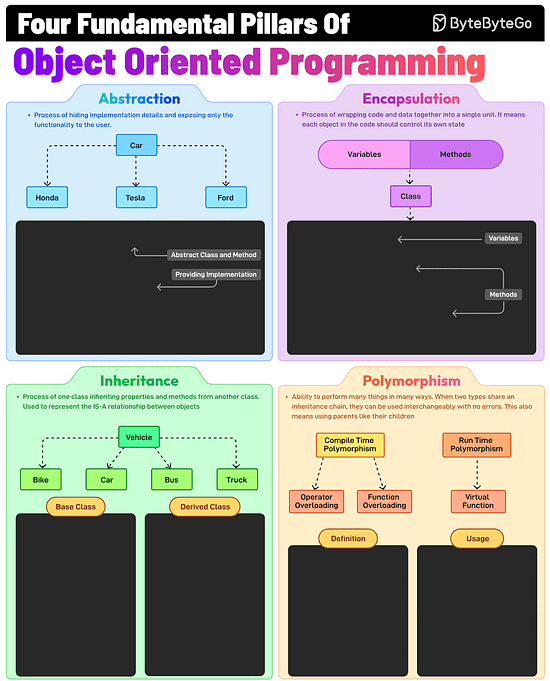Archives
- By thread 5234
-
By date
- June 2021 10
- July 2021 6
- August 2021 20
- September 2021 21
- October 2021 48
- November 2021 40
- December 2021 23
- January 2022 46
- February 2022 80
- March 2022 109
- April 2022 100
- May 2022 97
- June 2022 105
- July 2022 82
- August 2022 95
- September 2022 103
- October 2022 117
- November 2022 115
- December 2022 102
- January 2023 88
- February 2023 90
- March 2023 116
- April 2023 97
- May 2023 159
- June 2023 145
- July 2023 120
- August 2023 90
- September 2023 102
- October 2023 106
- November 2023 100
- December 2023 74
- January 2024 75
- February 2024 75
- March 2024 78
- April 2024 74
- May 2024 108
- June 2024 98
- July 2024 116
- August 2024 134
- September 2024 130
- October 2024 141
- November 2024 171
- December 2024 115
- January 2025 216
- February 2025 140
- March 2025 220
- April 2025 233
- May 2025 239
- June 2025 303
- July 2025 46
-
Introducing Our High-Quality Textile Products for Your Business
Dear Sir,
Good day!
I hope this message finds you well. My name is Ling, and I am writing to introduce our company, Shaanxi Huazuo Impex Co., Ltd. which specializes in the production and supply of high-quality textile products.
We offer a wide range of textiles including beach towels, bath towels,sport towels, face towels, kitchen towels, tea towels, table cloths ,ponchos, aprons, waterproof mattress protector, pillow protector,waterproof pants, PVC diapers etc, all of which are crafted to meet international standards. Our products are known for their good air permeability ,durability, comfort,High cost performance etc., and we believe they could be a great addition to your product line.Please visit our website for more product details https://huazuo.en.alibaba.com
We would be happy to send you more detailed information about our products or samples for your evaluation. If you are interested, I would be glad to arrange a meeting or call at your convenience to discuss the product details you want.
Kindly forward this mail to the concerned person in import/procurement department of your company.
We also look forward to your inquiry.
Best Regards
Ling Yu
Shaanxi Huazuo Impex Co., Ltd.
WhatsApp:+8613670218644
E-mail: dept06@shaanxihuazuo.com
Website: https://huazuo.en.alibaba.com
Office Address: Room 902, East Of Building A, Fengye Square, Gaoxin Road, High-Tech Zone, Xi 'an, Shaanxi, China
by "ForgeVise" <ForgeVise@shaanxihuazuo-raws.com> - 02:17 - 28 Apr 2025 -
Find high-quality textiles for your next project with YiweiGroup
Dear info,
I hope this message finds you well. I am writing to introduce you to our company and our exceptional flagship product, designed to meet the highest standards of quality and versatility, which are polyester, nylon, RPET and other textiles.
For the past 20 years, YiweiGroup has been at the forefront of the textile manufacturing industry. Our commitment to innovation, quality, and customer satisfaction has established us as a trusted partner to businesses worldwide.
YiweiGroup is one of the manufacturing leaders for textile in China. We specialize in developing and producing fabrics for bag and luggage products, apparel products, home textile products and also outdoor products.
We invite you to explore the remarkable potential of our products for your upcoming projects. By choosing YiweiGroup, you gain a partner committed to helping you achieve excellence in your product offerings.
Please do not hesitate to contact us for samples, detailed product specifications, or any further information you may require. We look forward to the opportunity to collaborate with you and support your business's growth and success.
Thank you for considering YiweiGroup as your trusted textile provider.
Warmest regards,
Yongzhao (Sam) Lu
Marketing Specialist
YiweiGroup Textile. Co
market@yiweigroupcn.com
https://www.yiweigroups.com
P.S.You can visit our global sources online store at https://yiweitextile.manufacturer.globalsources.com/homepage_6003002332362.htm
to stay updated on our latest products and innovations.
by "Puty Heduan" <monsterachimut188@gmail.com> - 02:12 - 28 Apr 2025 -
How WhatsApp Handles 40 Billion Messages Per Day
How WhatsApp Handles 40 Billion Messages Per Day
In this article, we’ll take a technical dive into how WhatsApp built its architecture and the challenges the engineering team faced during this journey.͏ ͏ ͏ ͏ ͏ ͏ ͏ ͏ ͏ ͏ ͏ ͏ ͏ ͏ ͏ ͏ ͏ ͏ ͏ ͏ ͏ ͏ ͏ ͏ ͏ ͏ ͏ ͏ ͏ ͏ ͏ ͏ ͏ ͏ ͏ ͏ ͏ ͏ ͏ ͏ ͏ ͏ ͏ ͏ ͏ ͏ ͏ ͏ ͏ ͏ ͏ ͏ ͏ ͏ ͏ ͏ ͏ ͏ ͏ ͏ ͏ ͏ ͏ ͏ ͏ ͏ ͏ ͏ ͏ ͏ ͏ ͏ ͏ ͏ ͏ ͏ ͏ ͏ ͏ ͏ ͏ ͏ ͏ ͏ ͏ ͏ ͏ ͏ ͏ ͏ ͏ ͏ ͏ ͏ ͏ ͏ ͏ ͏ ͏ ͏ ͏ ͏ ͏ ͏ ͏ ͏ ͏ ͏ ͏ ͏ ͏ ͏ ͏ ͏ ͏ ͏ ͏ ͏ ͏ ͏ ͏ ͏ ͏ ͏ ͏ ͏ ͏ ͏ ͏ ͏ ͏ ͏ ͏ ͏ ͏ ͏ ͏ ͏ ͏ ͏ ͏ ͏ ͏ ͏ ͏ ͏ ͏ ͏ ͏ ͏ ͏ ͏ ͏ ͏ ͏ ͏ ͏ ͏ ͏ ͏ ͏ ͏ ͏ ͏ ͏ ͏ ͏ ͏ ͏ ͏ ͏ ͏ ͏ ͏ ͏ ͏ ͏ ͏ ͏ ͏ ͏ ͏ ͏ ͏ ͏ ͏ ͏ ͏ ͏ ͏ ͏ ͏ ͏ ͏ ͏ ͏ ͏ ͏ ͏ ͏ Forwarded this email? Subscribe here for moreBuild to Prod: Secure, Scalable MCP Servers with Docker (Sponsored)
The AI agent era is here, but running tools in production with MCP is still a mess—runtime headaches, insecure secrets, and a discoverability black hole. Docker fixes that. Learn how to simplify, secure, and scale your MCP servers using Docker containers, Docker Desktop, and the included MCP gateway. From trusted discovery to sandboxed execution and secrets management, Docker gives you the foundation to run agentic tools at scale—with confidence.
Read the guide: MCPs to Prod with Docker
Disclaimer: The details in this post have been derived from the articles written by the WhatsApp engineering team. All credit for the technical details goes to the WhatsApp Engineering Team. The links to the original articles and videos are present in the references section at the end of the post. We’ve attempted to analyze the details and provide our input about them. If you find any inaccuracies or omissions, please leave a comment, and we will do our best to fix them.
Messaging platforms don’t get second chances. Missed messages, delayed photos, or dropped calls break trust instantly. And the bigger the user base, the harder it gets to recover from even brief failures.
Some systems thrive under that pressure.
WhatsApp is one of them. It moves nearly 40 billion messages daily, keeps hundreds of millions of users connected, and does it all with a small engineering team. At one point, just over 50 engineers supported the entire backend. Fewer than a dozen focused on the core infrastructure.
This scale is a result of multiple engineering choices that favored simplicity over cleverness, clarity over abstraction, and resilience over perfection. System failures weren’t unexpected, but inevitable. Therefore, the system was designed to keep going when things went sideways.
Erlang played a central role. Built for telecoms, it offered lightweight concurrency, fault isolation, and distributed messaging from the ground up. However, the real advantage came from what was layered on top: smart partitioning, async replication, tightly scoped failover, and tooling.
In this article, we’ll take a technical dive into how WhatsApp built its architecture and the challenges the engineering team faced during this journey.
System Design Principles
At the heart of WhatsApp’s architecture is a surprisingly basic principle: make it simple enough to reason about under stress. When systems operate at a global scale, complexity isn’t a big threat to reliability.
Some guiding principles followed by the WhatsApp engineering team were as follows:
Clarity Over Cleverness: The architecture favors small, focused components. Each service handles one job, minimizing dependencies and limiting the blast radius when things fail.
Async by Default: WhatsApp relies on async messaging throughout. Processes hand off work and move on, keeping the system responsive even when parts of it slow down. This design absorbs load spikes and prevents small glitches from snowballing.
Isolation: Each backend is partitioned into “islands” that can fail independently. Replication flows one way so that if a node drops, its peer takes over.
Seamless Upgrades: Code changes roll out without restarting services or disconnecting users. Discipline around state and interfaces makes this possible.
Quality Through Focus: In the early days, every line of backend code was reviewed by the founding team. That kept the system lean, fast, and deeply understood.
WhatsApp Server Architecture
Delivering a message sounds simple, until millions of phones start talking at once. At WhatsApp's scale, even small inefficiencies compound quickly.
The diagram below shows the high-level WhatsApp architecture:
The architecture focuses on three goals: speed, reliability, and resource isolation. Some key aspects of the architecture are as follows:
A Connection is a Process
When a phone connects to WhatsApp, it establishes a persistent TCP connection to one of the frontend servers. That connection is managed as a live Erlang process that maintains the session state, manages the TCP socket, and exits cleanly when the user goes offline.
There is no connection pooling and no multiplexing, but just one process per connection. This design maps naturally onto Erlang's strengths and makes lifecycle management straightforward. If something goes wrong, like a dropped network packet or app crash, the process dies, and with it, all associated memory and state.
Stateful and Smart on the Edge
The session process isn’t a dumb pipe. It actively coordinates with backends to pull user-specific data:
Authentication: Verifies the client identity and session validity.
Blocking and Permissions: Checks whether the user is allowed to send messages or has been restricted.
Pending Messages and Notifications: Queries message queues and notification subsystems.
This orchestration happens quickly and in parallel. By keeping session logic close to the edge, the system avoids round-trip and minimizes latency for first-message delivery.
Scaling Frontend Connections
At peak, a single chat server can manage upwards of a million concurrent connections. Erlang handles this effortlessly, thanks to its process model and non-blocking IO. Each session lives independently, so one slow client doesn’t affect others.
To maintain performance at that scale, frontend servers avoid unnecessary work by adopting some strategies:
Typing indicators and presence updates (for example, “online,” “last seen”) are batched and rate-limited.
Message acknowledgments use lightweight protocol messages, not full API calls.
Idle sessions are monitored and culled when inactive for too long.
This keeps frontend load proportional to active engagement, not just raw connection count.
Efficient Message Flow
When two users are online and start chatting, their session processes coordinate through backend chat nodes. These nodes are tightly interconnected and handle routing at the protocol level, not the application level. Messages move peer-to-peer within the backend mesh, minimizing hops.
Presence, typing states, and metadata updates add volume. For every message, multiple related updates might flow:
Delivery receipts
Typing notifications
Group membership changes
Profile picture updates
Each of these messages travel through the same architecture, but with reduced delivery guarantees. Not every typing status needs to arrive.
The Role of Erlang
Erlang plays a key role in the efficiency of WhatsApp’s backend.
Most backend stacks buckle when faced with millions of users doing unpredictable things at once. However, Erlang’s runtime is designed from the ground up to handle massive concurrency, soft failure, and fast recovery.
Here are some core features of Erlang:
In Erlang, every connection, every user session, and every internal task runs as a lightweight process. They’re managed by the BEAM virtual machine, which can spin up hundreds of thousands (sometimes millions) of them on a single node without choking.
Each process runs in isolation with its memory and mailbox. It can crash without taking down the system.
Erlang plays exceptionally well with large, multi-core boxes. As core counts increase, the BEAM scheduler spreads processes across them with minimal coordination overhead. This is SP scalability (Single Process or Single Point scaling), where node count stays constant while internal capacity grows.
Erlang’s “let it crash” philosophy is a pragmatic response to the unpredictability of distributed systems. Supervisors monitor child processes, restarting them if they fail. Failures stay local. There’s no chain reaction of exceptions or retries.
Erlang has a Gen Factory that dispatches work across multiple processes. Each mini-factory can handle its own stream of input, reducing contention and spreading load more evenly. This model keeps WhatsApp’s backend humming even under spikes in traffic.
Backend Systems and Isolation
Backend systems tend to become monoliths unless there’s a strong reason to split them up.
WhatsApp had one: survival at scale. When millions of users are relying on real-time messaging, even a minor backend hiccup can ripple through the system.
Here are a few strategies they adopted:
Divide by Function, Not Just Load
The backend is split into over 40 distinct clusters, each handling a narrow slice of the product. Some handle message queues. Others deal with authentication, contact syncing, or presence tracking. Multimedia, push notifications, and spam filtering each get their own space.
This kind of logical decoupling does a few things well:
Limits failure scope: If the spam filter crashes, message delivery doesn’t.
Speeds up iteration: Teams can deploy changes to one backend without risk to others.
Optimizes hardware: Some services are memory-bound, others are CPU-heavy. Isolation lets each run on the hardware it needs.
Decoupling isn’t free. It adds coordination overhead. However, at WhatsApp’s scale, the benefits outweigh the costs.
Redundancy Through Erlang Clustering
Erlang’s distributed model plays a key role in backend resilience. Nodes within a cluster run in a fully meshed topology and use native distribution mechanisms to communicate. If one node drops, others pick up the slack.
State is often replicated or reconstructible. Clients can reconnect to a new node and resume where they left off. Supervisors and health checks ensure that failed processes restart quickly, and clusters self-heal in the face of routine hardware faults.
There’s no single master node, no orchestrator dependency, and minimal need for human intervention.
“Islands” of Stability
To go further, the system groups backend nodes into what are called “islands.” Each island acts as a small, redundant cluster responsible for a subset of data, like a partition in a distributed database.
Here’s how the island approach works:
Each island typically has two or more nodes.
Data partitions are assigned deterministically to one node as primary and another as secondary.
If the primary goes down, the secondary takes over instantly.
Islands replicate data within themselves but remain isolated from other islands.
This setup adds a layer of fault tolerance without requiring full replication across the entire system. Most failures affect only one island, and recovery is scoped tightly.
Database Design and Optimization
When messages need to move at sub-second latency across continents, traditional database thinking doesn't apply. There’s no room for complex joins, heavyweight transactions, or anything that introduces blocking. WhatsApp's architecture leans hard into a model built for speed, concurrency, and volatility.
Here are some core database-related features:
Key-Value Store in RAM
Data access follows a key-value pattern almost universally. Each piece of information, whether it’s a user session, a pending message, or a media pointer, has a predictable key and a compact value.
And whenever possible, data lives in memory.
In-memory structures like Erlang’s ETS (Erlang Term Storage) tables provide fast, concurrent access without external dependencies. These structures are native to the VM and don’t require network hops or disk seeks. Read and write throughput remains consistent under pressure because memory latency doesn’t spike with load.
Databases Embedded in the VM
Instead of reaching out to external storage layers, most database logic is embedded directly within the Erlang runtime. This tight integration reduces the number of moving parts and avoids the latency that creeps in with networked DB calls.
Some backend clusters maintain their internal data stores, implemented using a mix of ETS tables and write-through caching layers. These stores are designed for short-lived data, like presence updates or message queues, that don’t require permanent persistence.
For long-lived data like media metadata, records are still kept in memory as long as possible. Only when capacity demands or eviction policies kick in does the data flush to disk.
Lightweight Locking and Fragmentation
Concurrency isn’t just about spawning processes. It’s also about managing locks.
To minimize lock contention, data is partitioned into what are called “DB Frags”: fragments of ETS tables distributed across processes.
Each fragment handles a small, isolated slice of the keyspace. All access to that fragment goes through a single process on a single node. This allows for:
Serialized access per key: No races, no locks.
Horizontal scale-out: More fragments mean more throughput.
Targeted replication: Each fragment is replicated independently to a paired node.
The result is a system where reads and writes rarely block, and scaling up just means adding more fragments and processes.
Async Writes and Parallel Disk I/O
For persistence, writes happen asynchronously and outside the critical path. Most tables operate in an async_dirty mode, meaning they accept updates without requiring confirmation or transactional guarantees. This keeps latency low, even when disks get slow.
Behind the scenes, multiple transaction managers (TMs) push data to disk and replication streams in parallel. If one TM starts to lag, others keep the system moving. IO bottlenecks are absorbed by fragmenting disk writes across directories and devices, maximizing throughput.
Offline Caching: Don’t Write What Will Be Read Soon
When a phone goes offline, its undelivered messages queue up in an offline cache. This cache is smarter than a simple buffer. It uses a write-back model with a variable sync delay. Messages are written to memory first, then flushed to disk only if they linger too long.
During high-load events, like holidays, this cache becomes a critical buffer. It allows the system to keep delivering messages even when the disk can’t keep up. In practice, over 98% of messages are served directly from memory before ever touching persistent storage.
Replication and Partitioning
Replication sounds simple until it isn’t.
At scale, it gets tricky fast. Bidirectional replication introduces locking, contention, and coordination overhead. Cross-node consistency becomes fragile. And when things go wrong, everything grinds to a halt.
WhatsApp follows a different strategy.
Each data fragment is owned by a single node: the primary. That node handles all application-layer reads and writes for its fragment. It pushes updates to a paired secondary node, which passively receives and stores the changes.
The secondary never serves client traffic. It’s there for failover only.
This model avoids one of the nastiest problems in distributed systems: concurrent access to shared state. There are no conflicting writes, no race conditions, and no need for transactional locks across nodes. If the primary fails, the secondary is promoted, and replication flips.
Also, instead of running one massive table per service, WhatsApp breaks data into hundreds and sometimes thousands of fragments. Each fragment is a small, isolated slice of the total dataset, typically hashed by a user ID or session key.
These fragments are:
Bound to a single node for writes.
Replicated to one other node.
Mapped to processes through consistent hashing.
This sharding scheme reduces contention, improves locality, and allows the system to scale horizontally without reshuffling state.
Each group of nodes managing a set of fragments is called an island. An island typically consists of two nodes: a primary and a secondary. The key is that each fragment belongs to only one island, and each island operates independently.
Scaling Challenges
WhatsApp's backend scaled not just because of clever design, but because teams learned where things cracked under pressure and fixed them before they exploded.
Some of the scaling challenges the WhatsApp team faced are as follows:
When Hashes Collided
Erlang’s ETS tables rely on hash-based indexing for fast access. In theory, that works fine. In practice, a collision in the hash function can degrade performance.
A subtle bug emerged when two layers of the system used the same hash function with different goals. The result was thousands of entries ending up in the same buckets, while others stayed empty.
The fix was change the seed of the hash function: a two-line patch that instantly improved throughput by 4x in that subsystem.
Selective Receive
Erlang's selective receive feature lets processes pull specific messages from their mailbox. This was handy for control flow, but dangerous under load.
In high-throughput situations, like loading millions of records into memory, selective receive turned into a bottleneck. Processes got stuck scanning for the right message.
Engineers worked around this by draining queues into temp storage, splitting logic across worker processes, and avoiding selective receive in performance-critical paths.
Cascading Failures Aren’t Always Load-Related
One of the most severe outages didn’t start with a CPU spike or traffic surge. It started with a router. A backend router silently dropped a VLAN, causing a massive disconnect-reconnect storm across the cluster.
What followed was a perfect storm: overloaded message queues, stuck nodes, unstable cluster state. At one point, internal queues grew from zero to four million messages in seconds. Even robust processes like PG2, normally fault-tolerant, began behaving erratically, queueing messages that couldn’t be delivered.
The only solution was a hard reset. The system had to be shut down, rebooted node by node, and carefully stitched back together.
Conclusion
WhatsApp’s backend is elegant in the trenches. It’s built to handle chaos without becoming chaotic, to scale without centralization, and to fail without taking users down with it.
From Erlang’s lightweight processes to carefully fragmented data and one-way replication, every design choice reflects a deep understanding of operational reality at massive scale.
The architecture is pragmatic: meant to withstand sudden spikes, silent regressions, and global outages.
References:
Erlang Factory 2014 - That's 'Billion' with a 'B': Scaling to the Next Level at WhatsApp
A Reflection on Building the WhatsApp Server - Code BEAM 2018
SPONSOR US
Get your product in front of more than 1,000,000 tech professionals.
Our newsletter puts your products and services directly in front of an audience that matters - hundreds of thousands of engineering leaders and senior engineers - who have influence over significant tech decisions and big purchases.
Space Fills Up Fast - Reserve Today
Ad spots typically sell out about 4 weeks in advance. To ensure your ad reaches this influential audience, reserve your space now by emailing sponsorship@bytebytego.com.
Like
Comment
Restack
© 2025 ByteByteGo
548 Market Street PMB 72296, San Francisco, CA 94104
Unsubscribe
by "ByteByteGo" <bytebytego@substack.com> - 11:36 - 28 Apr 2025 -
Your Beauty Vision, Our Manufacturing Expertise
Hi info,
Ready to create your dream beauty products? As an experienced OEM/ODM cosmetics manufacturer, we specialize in creating high-quality, bespoke solutions for businesses like yours.
Why partner with us?
Innovation: Unique formulations tailored to your audience
Quality: Cutting-edge facilities and stringent quality control
Sustainability: Eco-friendly solutions for a greener futureWe proudly partner with:
Brands launching their first product line
Retailers seeking private-label solutions
Influencers and celebrities creating signature collections
Let’s create something extraordinary together.Book a free consultation with our team today!
Warm regards,
Evelyn
+86 18903070739
Guangzhou Opseve Cosmetics Co., Ltd.
by "MAhipal Popplewell" <popplewellmahipal617@gmail.com> - 07:47 - 28 Apr 2025 -
knitted fabrics and functional sports fabric
Dear info,
Good morning.
Our factory supply high quality knitted fabric and functional sports fabrics shipping to adidas, primark, sam'sclub brands clothing factory.
We produce 900-1200tons knitted fabrics per month.
Do you need fabrics product catalogue series?
Please free feel to contact with us.
Best regards,
Mr. Sam Stone
Director of manufacturing:
Xianghua Group Co., Ltd.Shenzhou Printing Dyeing Co., Ltd.
Tianlun Siyuan Knitting Printing Co., Ltd.Email: samstone@outlook.com
Factory add.:Qiuxia Industrial Zone, Shishi 362700, China Fujian.
by "Fatima Hebbar" <hebbarfatima168@gmail.com> - 07:06 - 28 Apr 2025 -
A leader’s guide to the business impact of tariffs
Leading Off
Take action now
by "McKinsey Leading Off" <publishing@email.mckinsey.com> - 02:23 - 28 Apr 2025 -
Can you predict supply chain disruptions? Digital twins offer a way
On McKinsey Perspectives
A supply chain’s stunt double Brought to you by Alex Panas, global leader of industries, & Axel Karlsson, global leader of functional practices and growth platforms
Welcome to the latest edition of Only McKinsey Perspectives. We hope you find our insights useful. Let us know what you think at Alex_Panas@McKinsey.com and Axel_Karlsson@McKinsey.com.
—Alex and Axel
•
Self-healing supply chain. Rising labor costs, increasing consumer demand for fast and free deliveries, and geopolitical uncertainties are some of the forces stifling supply chains and squeezing companies’ margins. Organizations can more nimbly react and adapt to potential disruptions by harnessing AI-enabled, self-monitoring digital twins that are capable of both identifying issues and prescribing the fix, say McKinsey Partner Alex Cosmas and coauthors. By showing how physical and digital processes interact along the supply chain, digital twins make it easier for companies to optimize the end-to-end process that best suits their needs.
—Edited by Jermey Matthews, editor, Boston
This email contains information about McKinsey's research, insights, services, or events. By opening our emails or clicking on links, you agree to our use of cookies and web tracking technology. For more information on how we use and protect your information, please review our privacy policy.
You received this email because you subscribed to the Only McKinsey Perspectives newsletter, formerly known as Only McKinsey.
Copyright © 2025 | McKinsey & Company, 3 World Trade Center, 175 Greenwich Street, New York, NY 10007
by "Only McKinsey Perspectives" <publishing@email.mckinsey.com> - 01:30 - 28 Apr 2025 -
HPP Color Pigments and Corlorants in Paint application from HermetaChem
Dear info,
Most welcome to visit HERMETA and find all of your interests in our website www.hermetachem.com, we hope to be your most reliable and selected color pigments and relative chemical supplier in China.
Hermeta, as a member of Adagio, is the largest independent producer of Pigment Violet 23 in China with an annual output of 1000 mt of Crude Violet 23, 800 mt Powder Pigment Violet 23, 3000 mt Azo&HPP Pigments and some pigment intermediates in China.We are renowned for our consistently high product quality, stringent quality control and excellent knowledge of organic synthesis, We have substantial expertise in color chemistry across all segments especially in Coatings industry, our products were approved and well consumed by many MNC companies like Nippon Paint, Beger and so on.
The operations of all our manufacturing sites are in compliance with international standards for safety, quality and environment, we conduct quality test for every production batch before shipment delivery. Hermeta also has made the REACH Registration for most of the products sold to Europe.
Together with HERMETA to develop the brighter future and it would be quite appreciated to get a product inquiry from you, Thanks!!Thanks and Best regards,
Sales Manager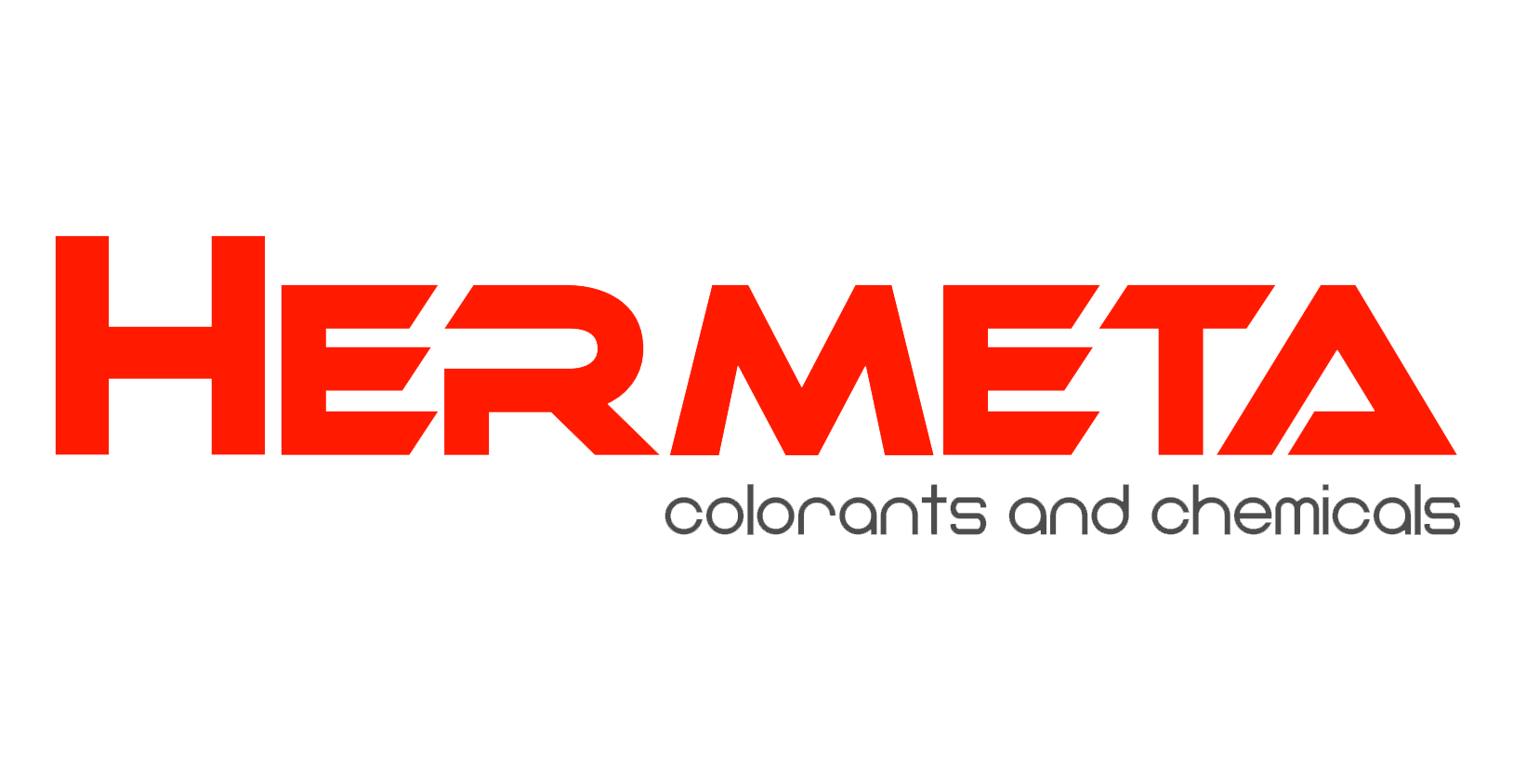
Nantong Hermeta Chemicals Co.,Ltd.
8F, Nantong International Business Center, North Street 166,
Gangzha District, Nantong City, Jiangsu, P. R. China, 226000T/F: +86-513-81902990
Web: www.hermetachem.com
by "Luna" <Luna@hermeta-chem.com> - 04:51 - 27 Apr 2025 -
Elevate Your Brand with Our Premium Saw Blades
Dear manager,
Good day!
This is Elizabeth from Wenzhou Yichuan Tools Co, Ltd.
Our company is specialized in Saw Blades including Jig saw blades, reciprocating saw blades(SS recip blades, Carbide saws), , multi-tool blades and hacksaw.We have 20 years experiences' in producing saw blades and automatic production line which make our saw blades with high&stable quality and competitive price.
More than 40 automatic machines and 20+ CNC machines ensure us with turnover of 5 million pcs blades each month.
We can do OEM for you with your own brand.
Would you like quotation and samples to you for evaluation?
Best regards
Elizabeth

by "Brady Thodore" <dannie471530@gmail.com> - 12:50 - 27 Apr 2025 -
New order
Hellohow are you I’m very interested in your product please get back to me so I can discuss more I am waiting for your updateGreetings,Mrs.Myles Adonis
by "Myles Adonis" <asabumola2008@gmail.com> - 11:32 - 27 Apr 2025 -
Professional Purchasing Skills (11 & 12 Jun 2025)
PROFESSIONAL PURCHASING SKILLS
(** Choose either Zoom OR Physical Session)
Remote Online Training (Via Zoom) &
Wyndham Grand Bangsar Kuala Lumpur Hotel (Physical)
(SBL Khas / HRD Corp Claimable Course)
Date : 11 Jun 2025 (Wed) | 9am – 5pm By SH Yeo
12 Jun 2025 (Thu) | 9am – 5pm .
. . .
OVERVIEW:
This 14 hours training program is designed to bring awareness, knowledge, and techniques to participants’ inorder to become a effective purchasing professional.
In this program, driven by a trainer with over 30 years experiences in supply chain and procurement management, participants will learn the key objectives of purchasing, skill and competency required to be a successful purchasing professional.
Key areas covered by this training related to purchasing management are role of purchasing and business challenges, strategic and tactical strategies of purchasing, and key skills required to be adopted in order to be a good and effective purchaser.
LEARNING OBJECTIVE / OUTCOMES:
By the end of the 14 hours by 4 session interactive online session or 2 Full day session face to face mode, the learning curve achieve will enable the following:-
- UNDERSTAND the key role of purchasing
- IDENTIFY the key skills and competencies required in order to be an effective purchaser
- DEVELOP action plan to put in place when conducting purchasing function
- UNDERSTAND the key objective to be achieved in purchasing
- UNDERSTAND main task to be carry out to ensure successful execution of the purchasing process
METHODOLOGY:
This training will involve the following area to enhance learning:
- Power point presentation
- Case studies & Brain storming session
- Discussion on subject of learning
- Facilitating by trainer to enhance understanding of subject matter
- Exercise to evaluate participants understanding
WHO MUST ATTEND:
This training program is highly recommended for employees involve directly or indirectly in handling purchasing function in the company.
OUTLINE OF WORKSHOP
Module 1 – The Role of Purchasing
- Definition of Purchasing versus Procurement
- Role of Purchasing in Operational and Business challenges
- Key Objectives of Purchasing
- Cycle of Purchasing
- Definition of Purchasing versus Procurement
- Key Fundamental to Effective and Efficient Purchasing
- Role of Purchasing in a company business operation
- Definition of Strategic and Tactical
- The Ps , Qs and Rs of Procurement
- Strategic Role in Purchasing
- Tactical Role in Purchasing
- Supply chain ethical requirement
Module 2 – Problem solving skills
- Understand competiveness model
- Problem solving method with 3 why and 1 How
- SWOT analysis
Module 3 – Building Negotiation Skills
- Integrative Negotiation
- Distributive Negotiation
- Stages of Negotiation
- Deciding red lines in negotiation
- Knowing your opponent traits
- Traits of a good negotiator
- Bad Negotiator habits
- Mistakes made in Negotiation
- Body language in negotiation
- Clear planning of objectives and goals
- Understand when to walk away
- Managing Reject and counter offer
- Dealing with difficult negotiators
- WATNA strategies
- BATNA strategies
- Break out room discussion and role ply
Module 4 – Sourcing and Suppliers Selection Skills
- Type of sourcing
- Tendering process
- The Cs of Supplier selection
- Method of Cost Evaluation
Module 5 – Cost Saving and Prices Detailing Skills
- Cost Reduction versus Cost Avoidance
- Area of Cost Reduction and Cost Avoidance
- Key Factors to consider in Cost Reduction
- Opportunity cost in cost reduction activities
- ERRANT cost reduction and avoidance strategy
- Team setting for cost reduction
- EXCEL spreadsheet reporting on cost avoidance and reduction
- Break out room discussion
Module 6 – Supplier and Supplies Management techniques
- The principle of supplier management
- Supplier segmentation
- Supplies management key principles
- Proactive versus Reactive Management
- Understand key suppliers traits
Module 7 – 3rd Party Risk Management
- Definition of 3rd party risk management
- Cycle of 3rd party risk management
- Strategic Risk Assessment
- Operational Risk Assessment
- Case study
Module 8 – Conducting Audit and Type of Audits
- Key steps to effective audit
- Operational Audit
- Ethical Audit
- Environment and Safety Audit
- Effective Auditing
Module 9 – Inventory Management system
- Understand lead time and reorder level
- What is Safety stock
- Method of determining Safe stock level for inventory
- Kanban system
Module 10 –Understand Rule of Delivery
- Incoterms, purchasing people must know
- Sales of Good Act
- Contract principles
- Key Information in Purchase Order
- Flow of a Purchase order
** Certificate of attendance will be awarded for those who completed the course
ABOUT THE FACILITATOR
SH Yeo
Academic & Professional Qualifications
Certified HRDF Trainer (TTT certificate number 4669)
Certified Professional Trainer and Facilitator (University Malaya, Malaysia)
- Diploma in Human Resource Management (UK)
- Diploma in Production Management (USA)
- MBA in Supply Chain Management (USA)
- 33 year of management experience in supply chain and operation
- Trainer & consultant since 2008
Mr. Yeo is a very experienced supply chain and operational manager and during his working career, spanning over 33 years, he has held various positions as following:-
1987 - with International Paint (later known as Akzo Nobel International Paint) as a Storekeeper
1989 to 1992 @ Warehouse Executive
1992 to 1993 @ Warehouse Manager
1993 to 1998 @ Production Manager
1998 to 1999 @ join Melandas as a Logistics and Purchasing Manager.
1999 to 2004 @ join Dian Creative as a Material Manager
2004 to 2006 @ join Joubert SA Malaysia as Purchasing Manager
2006 to 2008 @ Procurement Manager
2008 to 2019 @ Supply Chain Manager and Company Director
His major achievements include the following:-
1. Increase productivity in the production department by providing intrinsic and extrinsic motivation to the employees from 1993 to 1998.
2. Making major decision to advise a MNC company to drop LMW warehousing scheme and adopting MITI PC1 and 2 exemption system to help company to be more competitive in the local and oversea market in 1998.
3. Co coordinating Kastam licensing and reporting to solve company reporting and licensing issue with Kastam
4. Establishing control and procedure and bringing awareness to employee on important of supply chain control in 2004 until 2019 and achieving 100% shipment performances to customers
5. Involve in negotiating with a major customer from Europe to secure new contract and beside visiting overseas suppliers for performances improvement and selection of new suppliers
6. Carry out new product development by working with engineering and design team and suppliers, including spending on site at supplier premise to solve new product design issue
7. Introduced new procedures in warehouse and operation for better control of operation and reporting system
8. Managing and conducting cost reduction management program from 2008 to 2013 and reduce cost for the company by up to RM6.5 mil.
9. Involve in managing suppliers contract and involving in proposing and drafting new contract and contract renewal for suppliers from 2008 until 2019 (early retirement) by working with suppliers and internal stakeholders with guidance from legal expert.
10. Managing Non Disclosure Agreement with suppliers to protect company intellectual property
He has been conducting training since 2008 and recently retired as a fulltime supply chain manager and company director to concentrate on full time training and coaching.
(SBL KHAS / HRD Corp Claimable Course)
training Fee
14 hours Remote Online Training (Via Zoom)
RM 1,296.00/pax (excluded 8% SST)
2 days Face-to-Face Training (Physical Training at Hotel)
RM 2,250.00/pax (excluded 8% SST)
Group Registration: Register 3 participants from the same organization, the 4th participant is FREE.
(Buy 3 Get 1 Free) if Register before 3 Jun 2025. Please act fast to grab your favorite training program!We hope you find it informative and interesting and we look forward to seeing you soon.
Please act fast to grab your favorite training program! Please call 012-588 2728
or email to pearl-otc@outlook.com
Do forward this email to all your friends and colleagues who might be interested to attend these programs
If you would like to unsubscribe from our email list at any time, please simply reply to the e-mail and type Unsubscribe in the subject area.
We will remove your name from the list and you will not receive any additional e-mail
Thanks
Regards
Pearl
by "pearl@otcmsb.com.my" <pearl@otcmsb.com.my> - 04:38 - 27 Apr 2025 -
From Cheltenham to Ascot: The UK’s Top Horse Racing Events
The UK boasts some of the world’s most iconic horse racing events... Hello,
The UK boasts some of the world’s most iconic horse racing events, and we’re here to provide you with the ultimate hospitality experience.
Here’s a glimpse at what’s on offer:
- Cheltenham Festival (March): The pinnacle of jump racing, featuring four days of thrilling action and electric atmosphere.
- Grand National at Aintree (April): Witness the drama and excitement of the most famous steeplechase in the world.
- Scottish Grand National at Ayr (April): The pinnacle of the Scottish jumps season.
- Royal Ascot (June): A quintessentially British occasion where fashion, tradition, and racing excellence come together.
- Epsom Derby (June): Known as “The Greatest Flat Race in the World,” a true highlight of the sporting calendar.
- Goodwood Festival (July): A glamorous and relaxed summer event, offering stunning views and exceptional racing.
- Speak to our team about other racing events taking place throughout the year for costs and availability.

Our packages cover all these events and more, ensuring you and your guests enjoy a unique and unforgettable day.
Spots fill up quickly, so secure your place now for an event that will leave a lasting impression.
Josh Budz
Senior Business Development Manager
joinus@corporateraceday.com
+44 (0)121 2709072
+44 (0)7441 351 701

by "Josh - Corporate Race Day" <joinus@corporateraceday.com> - 03:15 - 27 Apr 2025 -
Reduce Costs with Centralized Access Control
Hi info,
Managing multi-tenant buildings? Taichuan’s ”IP-based video intercom systems“ simplify access control while cutting maintenance costs by 30%+.
Key features: Real-time visitor logs & tenant permissions
* Wireless retrofitting for existing infrastructure
* Energy-efficient designs (IP65 rated)
Book a 5-minute to see our web in action: https://www.taichuansmart.com/Best
Lily
Taichuan Co., Ltd
by "support2" <support2@taichuan-smart.com> - 07:17 - 26 Apr 2025 -
Ultra - Durable SSD RAM: Cut Equipment Failure Rate, Save Your Costs
I hope this email finds you well.
PANCUN is a provider of industrial embedded flash and memory solutions, with a strong focus on automation, aerospace, surveillance, robotics, rail transit, Smart City,communication and server industries.
Pancun product line:
- Industrial SSD Solutions
- military SSD
- military memory
- DRAM Modules
- Consumer SSD
- Enterprise SSD
- Enterprise DRAM
- Memory Card
- SD Card / TF Card
- EMMC
-LPDDR
- Automotive UFS
- INTEL MSATA wireless network card
- INTEL M.2 wireless network card
We always provide customers with high-quality. our products can meet your diverse needs ,and cost-effective industrial embedded flash and memory products to help customers win the future.
Looking forward to establishing a long-term business relationship with you.
Kindly Regards
PANCUN Sales Team
Whatsapp: +86-18898777001
Eamil : lilly@pancunstorage.com
by "Oliivier Garcon" <oliiviergarcon58@gmail.com> - 05:55 - 26 Apr 2025 -
The week in charts
The Week in Charts
Trade policy concerns, fashion industry emissions, and more Share these insights
Did you enjoy this newsletter? Forward it to colleagues and friends so they can subscribe too. Was this issue forwarded to you? Sign up for it and sample our 40+ other free email subscriptions here.
This email contains information about McKinsey's research, insights, services, or events. By opening our emails or clicking on links, you agree to our use of cookies and web tracking technology. For more information on how we use and protect your information, please review our privacy policy.
You received this email because you subscribed to The Week in Charts newsletter.
Copyright © 2025 | McKinsey & Company, 3 World Trade Center, 175 Greenwich Street, New York, NY 10007
by "McKinsey Week in Charts" <publishing@email.mckinsey.com> - 04:00 - 26 Apr 2025 -
EP160: Top 20 System Design Concepts You Should Know
EP160: Top 20 System Design Concepts You Should Know
Load Balancing: Distributes traffic across multiple servers for reliability and availability.͏ ͏ ͏ ͏ ͏ ͏ ͏ ͏ ͏ ͏ ͏ ͏ ͏ ͏ ͏ ͏ ͏ ͏ ͏ ͏ ͏ ͏ ͏ ͏ ͏ ͏ ͏ ͏ ͏ ͏ ͏ ͏ ͏ ͏ ͏ ͏ ͏ ͏ ͏ ͏ ͏ ͏ ͏ ͏ ͏ ͏ ͏ ͏ ͏ ͏ ͏ ͏ ͏ ͏ ͏ ͏ ͏ ͏ ͏ ͏ ͏ ͏ ͏ ͏ ͏ ͏ ͏ ͏ ͏ ͏ ͏ ͏ ͏ ͏ ͏ ͏ ͏ ͏ ͏ ͏ ͏ ͏ ͏ ͏ ͏ ͏ ͏ ͏ ͏ ͏ ͏ ͏ ͏ ͏ ͏ ͏ ͏ ͏ ͏ ͏ ͏ ͏ ͏ ͏ ͏ ͏ ͏ ͏ ͏ ͏ ͏ ͏ ͏ ͏ ͏ ͏ ͏ ͏ ͏ ͏ ͏ ͏ ͏ ͏ ͏ ͏ ͏ ͏ ͏ ͏ ͏ ͏ ͏ ͏ ͏ ͏ ͏ ͏ ͏ ͏ ͏ ͏ ͏ ͏ ͏ ͏ ͏ ͏ ͏ ͏ ͏ ͏ ͏ ͏ ͏ ͏ ͏ ͏ ͏ ͏ ͏ ͏ ͏ ͏ ͏ ͏ ͏ ͏ ͏ ͏ ͏ ͏ ͏ ͏ ͏ ͏ ͏ ͏ ͏ ͏ ͏ ͏ ͏ ͏ ͏ ͏ ͏ ͏ ͏ ͏ ͏ ͏ ͏ ͏ ͏ ͏ ͏ ͏ ͏ ͏ Forwarded this email? Subscribe here for more✂️Cut your QA cycles down to minutes with QA Wolf (Sponsored)
If slow QA processes bottleneck you or your software engineering team and you’re releasing slower because of it — you need to check out QA Wolf.
QA Wolf’s AI-native service supports web and mobile apps, delivering 80% automated test coverage in weeks and helping teams ship 5x faster by reducing QA cycles from hours to minutes.
QA Wolf takes testing off your plate. They can get you:
Unlimited parallel test runs for mobile and web apps
24-hour maintenance and on-demand test creation
Human-verified bug reports sent directly to your team
Zero flakes guarantee
The benefit? No more manual E2E testing. No more slow QA cycles. No more bugs reaching production.
With QA Wolf, Drata’s team of 80+ engineers achieved 4x more test cases and 86% faster QA cycles.
This week’s system design refresher:
System Design Was HARD - Until You Knew the Trade-Offs (Youtube video)
Top 20 System Design Concepts You Should Know
What is an AI Agent?
Essential Git Cheatsheet!
9 OOP Design Patterns You Must Know
The Fundamental Pillars of Object-Oriented Programming
SPONSOR US
System Design Was HARD - Until You Knew the Trade-Offs
You have developer productivity metrics — now what? (Sponsored)
DX CTO Laura Tacho has coached hundreds of engineering leaders on using developer productivity data—and in this guide, she explains how to use data to drive continuous improvement at all levels of an organization.
In this guide, you'll learn:
Different use cases for measurement and how this affects which metrics to use
Distinguishing between 'diagnostic' and 'improvement' metrics
How to use metric mapping to go from big picture to granular targets
Setting expectations for how metrics should be used within a company
Top 20 System Design Concepts You Should Know
Load Balancing: Distributes traffic across multiple servers for reliability and availability.
Caching: Stores frequently accessed data in memory for faster access.
Database Sharding: Splits databases to handle large-scale data growth.
Replication: Copies data across replicas for availability and fault tolerance.
CAP Theorem: Trade-off between consistency, availability, and partition tolerance.
Consistent Hashing: Distributes load evenly in dynamic server environments.
Message Queues: Decouples services using asynchronous event-driven architecture.
Rate Limiting: Controls request frequency to prevent system overload.
API Gateway: Centralized entry point for routing API requests.
Microservices: Breaks systems into independent, loosely coupled services.
Service Discovery: Locates services dynamically in distributed systems.
CDN: Delivers content from edge servers for speed.
Database Indexing: Speeds up queries by indexing important fields.
Data Partitioning: Divides data across nodes for scalability and performance.
Eventual Consistency: Guarantees consistency over time in distributed databases
WebSockets: Enables bi-directional communication for live updates.
Scalability: Increases capacity by upgrading or adding machines.
Fault Tolerance: Ensures system availability during hardware/software failures.
Monitoring: Tracks metrics and logs to understand system health.
Authentication & Authorization: Controls user access and verifies identity securely.
Over to you: Which other System Design concept will you add to the list?
What is an AI Agent?
An AI agent is a software program that can interact with its environment, gather data, and use that data to achieve predetermined goals. AI agents can choose the best actions to perform to meet those goals.
Key characteristics of AI agents are as follows:
An agent can perform autonomous actions without constant human intervention. Also, they can have a human in the loop to maintain control.
Agents have a memory to store individual preferences and allow for personalization. It can also store knowledge. An LLM can undertake information processing and decision-making functions.
Agents must be able to perceive and process the information available from their environment.
Agents can also use tools such as accessing the internet, using code interpreters and making API calls.
Agents can also collaborate with other agents or humans.
Multiple types of AI agents are available such as learning agents, simple reflex agents, model-based reflex agents, goal-based agents, and utility-based agents.
A system with AI agents can be built with different architectural approaches.
Single Agent: Agents can serve as personal assistants.
Multi-Agent: Agents can interact with each other in collaborative or competitive ways.
Human Machine: Agents can interact with humans to execute tasks more efficiently.
Over to you: Have you used AI Agents?
Essential Git Cheatsheet!
🔧 Basic Commands
git init – Initialize a new Git repository.
git clone <repo_url> – Clone a remote repository.
git status – Check the status of your working directory.
git add <file> – Stage changes for commit.
git commit -m "message" – Commit staged changes with a message.
git push – Push your local commits to the remote repository.
git pull – Fetch and merge changes from the remote repo.
git diff – Show changes in the working directory (uncommitted changes).
git diff --staged – Show changes between the staging area and last commit.
🛠️ Branching & Merging
git branch – List branches.
git branch <branch_name> – Create a new branch.
git checkout <branch_name> – Switch to another branch.
git checkout -b <branch_name> – Create and switch to a new branch.
git merge <branch_name> – Merge a branch into the current one.
git branch -d <branch_name> – Delete a branch after merging.
git branch -D <branch_name> – Forcefully delete a branch, even if it hasn’t merged.
🔄 Synchronization
git fetch – Download changes from remote without merging.
git rebase <branch> – Reapply commits on top of another branch to maintain linear history.
git pull --rebase – Fetch and reapply your changes on top of the latest remote changes.
git remote add <name> <url> – Add a new remote repository.
🎯 Advanced Git
git stash – Temporarily save changes without committing.
git stash pop – Reapply stashed changes.
git cherry-pick <commit> – Apply a specific commit to your current branch.
git log --oneline – View simplified commit history.
git reflog – Show the history of your reference changes (e.g., checkout, resets).
git log --graph --decorate --all – Show a visual commit history.
🚨 Undoing Changes
git reset <file> – Unstage a file.
git reset --soft <commit> – Reset to a commit but keep changes in the working directory.
git reset --hard <commit> – Completely reset to a previous commit, discarding changes.
git revert <commit> – Create a new commit that undoes a specific commit.
⚙️ Collaborating with Others
git fork – Fork a repository on GitHub (via UI) to start contributing.
git pull origin <branch> – Pull changes from the original remote branch.
git push origin <branch> – Push your branch to the original repository for collaboration.
Over to you: did we miss anything?9 OOP Design Patterns You Must Know
These patterns can be divided into 3 categories:
A - Creational Patterns
Deal with object creation mechanism to decouple the client code from concrete classes.Factory Pattern: Centralizes object creation logic and returns different subclasses based on input
Singleton Pattern: Ensures only one instance of a class exists and provides global access to it.
Builder Pattern: Constructs complex objects step-by-step, allowing optional configuration.
B - Structural Patterns
Help compose classes and objects into larger structures.Adapter Pattern: Allows incompatible interfaces to work together by translating one interface into another.
Decorator Pattern: Adds new behavior to objects dynamically without altering their original structure.
Proxy Pattern: Acts as a placeholder for accessing another object.
C - Behavioral Patterns
Focus on communication and interaction between objects.Strategy Pattern: Allows selecting an algorithm or behavior from a family of interchangeable strategies at runtime.
Observer Pattern: Enables a one-to-many dependency so that when one object changes state, all its dependents are notified.
Command Pattern: An object encapsulates all information needed to perform an action or trigger an event.
Over to you: Which of these patterns have you used?
The Fundamental Pillars of Object-Oriented Programming
Abstraction, Encapsulation, Inheritance, and Polymorphism are the four pillars of object-oriented programming. What do they mean?
Abstraction
This is the process of hiding implementation details and showing only the essential features of an object. For example, a Vehicle class with an abstract stop method.
Encapsulation
It involves wrapping data (fields) and methods in a single unit (class) and restricting direct access using access modifiers. For example, private fields with public getters and setters.
Inheritance
The process of creating a new class (child) that inherits attributes and methods from an existing class (parent), thereby promoting code reuse. For example, a Car class inherits from a Vehicle class.
Polymorphism
It allows methods to perform differently based on the object they are invoked on. When two types share an inheritance chain, they can be used interchangeably with no errors.
Over to you: Do you use object-oriented programming?
SPONSOR US
Get your product in front of more than 1,000,000 tech professionals.
Our newsletter puts your products and services directly in front of an audience that matters - hundreds of thousands of engineering leaders and senior engineers - who have influence over significant tech decisions and big purchases.
Space Fills Up Fast - Reserve Today
Ad spots typically sell out about 4 weeks in advance. To ensure your ad reaches this influential audience, reserve your space now by emailing sponsorship@bytebytego.com.
Like
Comment
Restack
© 2025 ByteByteGo
548 Market Street PMB 72296, San Francisco, CA 94104
Unsubscribe
by "ByteByteGo" <bytebytego@substack.com> - 11:35 - 26 Apr 2025 -
📚 New Tools for Global Teams & Event Highlights
📚 New Tools for Global Teams & Event Highlights
Your monthly global update from Remote has landed, check it out!.png?width=204&upscale=true&name=Logo%20Horizontal%20(3).png)


Product news
New: Manage multiple entities in one Remote account

Juggling global teams across different entities? Now you can keep everything organized in Remote, with our new Multi-Entity feature. HR, finance, and ops can stay in sync without the headaches.
New: Sync your EOR invoice data with Quickbooks
.png?width=1040&upscale=true&name=1920x1080%20-%20Blog(1).png)
Remote’s new integration with Quickbooks syncs your EOR invoices automatically. Let your finance team focus on what’s really important, we’ll take care of the rest.
New: Remote Embedded is introducing Flows and White Label

Remote Embedded is introducing Flows and White Label, two new operating models that enhance our embedded partnership options alongside the existing Remote Embedded API.
These models give partners greater flexibility in embedding Remote’s market-leading global hiring and payroll solutions into their platforms.
New: Remote Equity Essentials

Managing equity for a global team just got easier. Gain country-specific insights, compliance support, and an employee equity portal — all in one place.
💡 Stay compliant, reduce admin time, and empower your team.

New report
Top talent has no borders. Here’s where to find it.
 Check out our global talent hotspot locator to find the world’s best regions for the most in-demand roles. Get the scoop on candidate availability, average salary, hiring difficulty, AI impact, and experience level — everything you need to spot the best international hires, fast.
Check out our global talent hotspot locator to find the world’s best regions for the most in-demand roles. Get the scoop on candidate availability, average salary, hiring difficulty, AI impact, and experience level — everything you need to spot the best international hires, fast.
New Youtube playlist
Payroll Explained

Confused by payroll terms and rules? You’re not alone! That’s why we created Payroll Explained: our new YouTube playlist that breaks it all down with simple, clear, and straight-to-the-point videos, helping you navigate payroll with confidence!

Upcoming events
🇺🇸 United States
Join us at Unleash America in Las Vegas
When: May 6-8
Where: Caesars Forum, Las Vegas
Remote returns to Unleash America as Gold Sponsor. Visit us on booth 661 and take part in our HR Bingo for a chance to win a $250 Amazon voucher!
Remote is heading back to SaaStock USA!
When: May 13-14
Where: Palmer Events Center, Austin, TX
Catch us at Booth 406 to meet the team and explore how we’re supporting businesses globally. Join the Remote led Saastock 5K run and connect with peers while taking in the Austin city view.
Join us at SaaStr Annual!
When: May 13-15
Where: San Francisco Bay Area
Catch us at Booth 204 to meet the team and discover how Remote is helping businesses scale globally. Let’s connect and chat about how we can support your growth goals!
🇩🇪 Germany
Let’s talk about the future of global HR - together in Stuttgart
When: May 6-7
Where: Messe Stuttgart
We are heading to Zukunft Personal Süd, taking place on May 6th + 7th, 2025 in Messe Stuttgart. Stop by our booth G.29 to chat about global hiring, seamless payroll, and your 2025 HR roadmap.
Want to join us for free? Drop us a line at dach@remote.com with the subject ZP Süd free ticket.
End of shift, but just the beginning for smarter hiring!
When: May 9
Where: Landschaftspark Duisburg-Nord
We’re thrilled to join Schicht im Schacht on May 9th, 2025 in Duisburg - a unique HR event set in an unforgettable industrial backdrop. Come find us and let’s talk about how Remote can help you attract, hire, and retain top talent - anywhere in the world.
Don’t miss this one-of-a-kind event
🇨🇭 Switzerland
Let’s talk tech hiring strategy over free coffee
When: May 15
Where: TRUST SQUARE Bahnhofstrasse, Zurich
Join Remote for an exclusive Tech Recruiting Breakfast in Zurich on May 15th. We’re bringing together talent acquisition leaders and HR professionals for great coffee, meaningful conversations, and a panel discussion on how to win top tech talent in a competitive market.
Peek at the lineup & claim your free seat
🇪🇸 Spain
Join us at Factor Humano in Madrid
When: April 28
Where: Estadio Riyadh Air Metropolitano, Madrid
Join Remote on April 28 to discover how we help companies effortlessly build and manage global teams. Come meet the team at booth #11.
🇦🇪 United Arab Emirates
Join us at HR Tech Mena Summit in Dubai
When: May 13-14
Where: W Dubai - The Palm
Join Remote on May 13&14 and don’t miss Ralitsa’s session on how asynchronous and remote work models are transforming organizational efficiency and employee experiences. Stop by booth #S6 to meet the team!
🇮🇹 Italy
Join us at Global HR Summit
When: May 21-22
Where: Lago di Garda Lazise - Verona
Join Remote on May 21 & 22 and don’t miss Luca’s session on Global Hiring: Challenges & Opportunities – Success Stories. Stop by Remote’s booth to meet the team and discover how we help companies hire, manage, and pay talent globally with ease!
Take the next step toward simplification
Talk with one of experts and delve into how Remote can specifically address your global HR challenges.







You received this email because you are subscribed to
News & Offers from Remote Europe Holding B.V
Update your email preferences to choose the types of emails you receive.
Unsubscribe from all future emailsRemote Europe Holding B.V
Copyright © 2025 Remote Europe Holding B.V All rights reserved.
Kraijenhoffstraat 137A 1018RG Amsterdam The Netherlands
by "Remote" <hello@remote-comms.com> - 11:02 - 25 Apr 2025 -
Exploring Options for Artificial Fence/Grass fence/Privacy Fence
Dear info
How are you?
We have new fencing product to introudce to you, which combine grass yarn and wire fence together, better appearance and better use than normal fence.If you have any new inquiry of Artificial fence, grass, Hedge, just feel free to contact us.Greatwall grasswww.greatwallgrass.com
by "sales9" <sales9@wqgrassfence.com> - 09:34 - 25 Apr 2025 -
Basic GreenHouse Gas (GHG) Accounting, Mitigation, Audit And Reporting Training - 27 & 28 May 25
HYBRID PUBLIC PROGRAM
BASIC GREENHOUSE GAS (GHG) ACCOUNTING,
MITIGATION, AUDIT AND REPORTING TRAINING
(** Choose either Zoom OR Physical Session)
Remote Online Training (Via Zoom) &
Wyndham Grand Bangsar Kuala Lumpur Hotel (Physical)
(SBL Khas / HRD Corp Claimable Course)
Date : 27 May 2025 (Tue) | 9am – 5pm By Shaharuddin
28 May 2025 (Wed) | 9am – 5pm . .
INTRODUCTION:
Many organizations are starting to think about how to manage their greenhouse gas (GHG) emissions for a number of reasons: to minimize their impact on the planet, to prepare for regulation and address evolving disclosure requirements, to increase energy efficiency and/or to build their profile as an environmental leader. Building an inventory of your sources and emissions (eg., carbon footprint) is an essential first step to assessing risks, reducing emissions and tracking your performance.
This course aims at professionals responsible for measuring, reporting and managing carbon dioxide and other greenhouse gas (GHG) emissions for their organization. This training course will cover the basics of GHG accounting for organizations. The course materials are based on the WRI/WBCSD GHG Protocol Corporate Standard, while referring to the ISO 14064: Part 1 international standard for GHG inventories.
This course will provide you the latest information regarding GHG emissions accounting and management and focuses on areas such as: background to climate change, developing a carbon accounting system, managing GHG emissions and options for reducing GHG emissions. You will also be equipped to communicate effectively the imperative of reducing the GHG emissions with colleagues.
This training is designed to provide participants with essential understanding of carbon accounting approaches and methodologies based on ISO14064 and the GHG Protocol: Corporate Accounting and Reporting Standards. These standards besides have formed the basis of many local and international schemes, they also provide tools for industries and governments in developing their programs to reduce greenhouse gas (GHG) emissions.
OBJECTIVE:
This programme will enable participants to :-
- Understand the Greenhouse Gas Protocol’s Corporate Standard
- Understand the ISO 14064 Standard
- Enable to identify GHG sources of emissions
- Enable participants to prepared GHG calculations
- Enable participants to determine GHG mitigation
- Understand the assess GHG audit and verification processes
- Understand the learn to prepare reports
WHO SHOULD ATTEND:
Safety committees who are responsible for identifying GHG sources, prepared GHG calculations, determine mitigation, assess GHG audit processes.
LEARNING METHODOLOGY:
This training will involve the use of slides, handout material, practical tools, sharing of actual cases, Q & A and appropriate videos.
OUTLINE OF WORKSHOP
DAY ONE
9.00 am - 10.30 am
Overview of GHG Accounting
- Introduction to GHG Accounting and Its Value to Businesses & Investors
- Terminology
- Accounting Process Overview
- Current Industry Initiatives
- Interactive Exercise 1
10.30 am - 10.45 am Tea Break
10.45 am - 1.00 pm
The Science Behind GHG Accounting
- Why Do We Track GHG Emissions
- The Science of the GHG Effect
- The 6 GHGs, Their Impacts, and Sources
- Global Warming Potential (GWP)
- Interactive Exercise 2
1.00 pm - 2.00 pm Lunch
2.00 pm - 3.30 pm
The Process of GHG Accounting Part 1
- Best Practices from GHG Protocol
- Defining Organizational Boundaries
- Defining Operational & Legal Boundaries
- Identifying Emissions Sources and Collecting Data
- Defining Units and Referencing Emissions Factors
- Common Pitfalls & Considerations
- Best Practices
3.30 pm - 3.45 pm Tea Break
3.45 pm - 5.00 pm
The Process of GHG Accounting Part 2
- Purpose and Benefits of ISO 14064
- Introduction of the ISO 14064-1:2006 Greenhouse gases — Part 1: Specification with guidance at the organization level for quantification and reporting of greenhouse gas emissions and removals
- Introduction of ISO 14064-2:2018 Greenhouse gases — Part 2: Specification with guidance at the project level for quantification, monitoring and reporting of greenhouse gas emission reductions or removal enhancements
- Introduction of ISO 14064-3:2018 Greenhouse gases — Part 3: Specification with guidance for the validation and verification of greenhouse gas assertions
DAY TWO
9.00 am - 10.30 am
Example Scope 1 & 2 Calculations
Interactive Exercise 3
How to quantify and report GHG emissions
- Step-by-step inventory preparation
- Using the emission factors
Fuel emission factors
- Stationary combustion fuel
- Transport fuel
- Biofuels and biomass
- Transmission and distribution losses for reticulated gases
- Purchased electricity, heat and steam emission factors
10.30 am - 10.45 am Tea Break
10.45 am - 1.00 pm
- Example Scope 3 Calculations & Challenges
- Interactive Exercise 4
Fuel emission factors
- Refrigerant and other gases use emission factors
- Indirect business-related emission factors
- Travel emission factors
- Freight transport emission factors
1.00 pm - 2.00 pm Lunch
2.00 pm - 3.30 pm
GHG Accounting in Corporations & Emissions Reports and Current State of GHG Accounting
- Why Corporations Should Measure GHG Emissions
- Investment Context Use Cases - Mandates & Compliance
- GHG Reductions & Planned Impact (Scope 4 Emissions)
3.30 pm - 3.45 pm Tea Break
3.45m - 5.00 pm
Producing a GHG report
- Interpreting Emissions Reports
- Additional Tools & Resources
- Qualified Assessment
- Verification Procedure with Third Party
** Certificate of attendance will be awarded for those who completed the course
ABOUT THE FACILITATOR
SHAHARUDDIN
· Diploma in Industrial Chemistry, UiTM.
· BEng (Hons) Chemical Engineering, Univ. South Wales, UK
· Master of Environment, UPM
· Certified PSMB Trainer (Exemption)
Shaharuddin is an HSE Consultant and Trainer with more than 22 years of industrial related working experience. He specializes in providing training and consultancy services, especially in Dangerous Goods, Hazardous Chemicals, Hazardous Wastes, Process Plant Safety, Industrial Hygiene and Environmental Management. His HSE consultancies services covering various type of industries such as in oil & gas industries, chemical specialty plant, plastic & rubber based industry, automotive industries, pulp & paper manufacturing, woodworking industries, electroplating and electronic plant, steelmaking industries, food & beverage industries, paint manufacturing, construction industries, healthcare industries, utilities provider for water & wastewater treatment plant ,solid waste management company and an off-site facility for treatment and disposal of scheduled wastes.
Shaharuddin has experience as a registered Safety & Health Officer and as a Competent Person for Monitoring of Noise Exposure at Work with DOSH. He has involved in Dangerous Goods, Hazardous Chemicals or Scheduled Waste towards compliance program under the USECHH 2000 Regulation, UN Dangerous Goods Legislation and Scheduled Waste Regulation. He had a vast experience as a DOSH registered Assessor for Chemical Health Risk Assessment and also as an Industrial Hygiene Technician I & II, both for Testing and examination of Local Exhaust Ventilation and Chemical Exposure Monitoring. With these multiple industrial hygiene competencies, he had successfully conducted a great numbers of hazardous chemical assessment and monitoring projects throughout Malaysia. As a registered trainer with HRDF and DOSH, Shaharuddin has been actively conducting training on HSE particularly on Safe Handling of Hazardous Chemical/Dangerous Goods and Scheduled Waste Management. He has wide experience in conducting training and providing ISO consultancy to guide companies in implementing ISO 14001, OHSAS 18001 ,Carbon Footprint Assessment , Green Productivity Assessment, Life Cycle Assessment and Cleaner Production Program, for various types of industries in Malaysia. He also involve in giving training and consultancy to industries using chemicals in Chemical Management for Product Stewardship Program to comply with International Chemical Laws such as REACH, WEEE and RoHS.
Academically, Shaharuddin hold Diploma in Industrial Chemistry from UiTM. He also holds Bachelor Degree in Chemical Engineering ( Majoring in Process Safety, Environmental & Energy Management) from University of Glamorgan, Wales, UK and Master of Environmental Science from UPM with Project on Hazardous Chemical Management. He also holds Certificate in Indoor Air Quality Assessor from NIOSH, Certificate in Green Building Index Facilitator from Malaysia Green Building Council, Certificate of Green Productivity Trainer & Consultant from Asian Productivity Centre, Japan , a Certificate of Green Industry Auditor & Certificate of Environmental Auditor from Department of Environment, Malaysia and a Certificate of Energy Management System from UNIDO, and a Certificate in Z50 Green Technology Compliance – ILO-CIAST.
(SBL Khas / HRD Corp Claimable Course)
TRAINING FEE
14 hours Remote Online Training (Via Zoom)
RM 1,296.00/pax (excluded 8% SST)
2 days Face-to-Face Training
(Physical Training at Hotel)
RM 2,250.00/pax (excluded 8% SST)
Group Registration: Register 3 participants from the same organization, the 4th participant is FREE.
(Buy 3 Get 1 Free) if Register before 16 May 2025. Please act fast to grab your favourite training program!We hope you find it informative and interesting and we look forward to seeing you soon.
Please act fast to grab your favorite training program! Please call 012-588 2728
or email to pearl-otc@outlook.com
Do forward this email to all your friends and colleagues who might be interested to attend these programs
If you would like to unsubscribe from our email list at any time, please simply reply to the e-mail and type Unsubscribe in the subject area.
We will remove your name from the list and you will not receive any additional e-mail
Thanks
Regards
Pearl
by "sump@otcmsb.com.my" <sump@otcmsb.com.my> - 09:55 - 25 Apr 2025 -
Odoo Learn sales
Hi
I came across your website and read about your software.
I work at Brax, a lead generation company that helps software development firms find more clients.
We recently launched a marketing campaign for one of our clients and they saw 150 new inquiries in just 21 days.
Can we chat about how we can do the same for you?
Thanks,
Mark @ Brax
422 Richards St, Suite 170. Vancouver, BC V6B 2Z4
P.S. If you don't want to hear from me again, please let me know.
by "Mark Siiten" <marksiiten@getbraxservices.com> - 09:35 - 25 Apr 2025-
Re: Odoo Learn sales
Hey ,
I wouldn't be wasting my time or yours if I didn't believe Brax would benefit your company.
Here are some case studies of our clients along with some resources.
Would you be interested in learning more?
Regards,
Mark @ Brax
422 Richards St, Suite 170. Vancouver, BC V6B 2Z4
P.S. If you don't want to hear from me again, please let me know.-----Original Message-----
From: Mark Siiten
To: info@learn.odoo.com
Subject: Re: Odoo Learn sales
Hey, just checking to see if you got that?
Mark @ Brax
422 Richards St, Suite 170. Vancouver, BC V6B 2Z4
P.S. If you don't want to hear from me again, please let me know.-----Original Message-----
From: Mark Siiten
To: info@learn.odoo.com
Subject: Odoo Learn sales
Hi
I came across your website and read about your software.
I work at Brax, a lead generation company that helps software development firms find more clients.
We recently launched a marketing campaign for one of our clients and they saw 150 new inquiries in just 21 days.
Can we chat about how we can do the same for you?
Thanks,
Mark @ Brax
422 Richards St, Suite 170. Vancouver, BC V6B 2Z4
P.S. If you don't want to hear from me again, please let me know.
by "Mark Siiten" <marksiiten@getbraxservices.com> - 08:58 - 2 May 2025-
Re: Odoo Learn sales
Hi
I know you're busy but wanted to move this to the top of your inbox and see when we can connect.
Let me know when is a good time for a quick chat.
Thanks,
Mark @ Brax
422 Richards St, Suite 170. Vancouver, BC V6B 2Z4
P.S. If you don't want to hear from me again, please let me know.-----Original Message-----
From: Mark Siiten
To: info@learn.odoo.com
Subject: Re: Odoo Learn sales
Hi
I just wanted to loop back on my previous email. I'm looking to connect over a quick call to discuss a few ideas on how to generate better ROI from your ads.
Let me know when would be a good time for a quick chat this week.
Take care,
Mark @ Brax
422 Richards St, Suite 170. Vancouver, BC V6B 2Z4
P.S. If you don't want to hear from me again, please let me know.-----Original Message-----
From: Mark Siiten
To: info@learn.odoo.com
Subject: Re: Odoo Learn salesHey ,
I wouldn't be wasting my time or yours if I didn't believe Brax would benefit your company.
Here are some case studies of our clients along with some resources.
Would you be interested in learning more?
Regards,
Mark @ Brax
422 Richards St, Suite 170. Vancouver, BC V6B 2Z4
P.S. If you don't want to hear from me again, please let me know.-----Original Message-----
From: Mark Siiten
To: info@learn.odoo.com
Subject: Re: Odoo Learn sales
Hey, just checking to see if you got that?
Mark @ Brax
422 Richards St, Suite 170. Vancouver, BC V6B 2Z4
P.S. If you don't want to hear from me again, please let me know.-----Original Message-----
From: Mark Siiten
To: info@learn.odoo.com
Subject: Odoo Learn sales
Hi
I came across your website and read about your software.
I work at Brax, a lead generation company that helps software development firms find more clients.
We recently launched a marketing campaign for one of our clients and they saw 150 new inquiries in just 21 days.
Can we chat about how we can do the same for you?
Thanks,
Mark @ Brax
422 Richards St, Suite 170. Vancouver, BC V6B 2Z4
P.S. If you don't want to hear from me again, please let me know.
by "Mark Siiten" <marksiiten@getbraxservices.com> - 10:48 - 9 May 2025 -
Re: Odoo Learn sales
Hi
I just wanted to loop back on my previous email. I'm looking to connect over a quick call to discuss a few ideas on how to generate better ROI from your ads.
Let me know when would be a good time for a quick chat this week.
Take care,
Mark @ Brax
422 Richards St, Suite 170. Vancouver, BC V6B 2Z4
P.S. If you don't want to hear from me again, please let me know.-----Original Message-----
From: Mark Siiten
To: info@learn.odoo.com
Subject: Re: Odoo Learn salesHey ,
I wouldn't be wasting my time or yours if I didn't believe Brax would benefit your company.
Here are some case studies of our clients along with some resources.
Would you be interested in learning more?
Regards,
Mark @ Brax
422 Richards St, Suite 170. Vancouver, BC V6B 2Z4
P.S. If you don't want to hear from me again, please let me know.-----Original Message-----
From: Mark Siiten
To: info@learn.odoo.com
Subject: Re: Odoo Learn sales
Hey, just checking to see if you got that?
Mark @ Brax
422 Richards St, Suite 170. Vancouver, BC V6B 2Z4
P.S. If you don't want to hear from me again, please let me know.-----Original Message-----
From: Mark Siiten
To: info@learn.odoo.com
Subject: Odoo Learn sales
Hi
I came across your website and read about your software.
I work at Brax, a lead generation company that helps software development firms find more clients.
We recently launched a marketing campaign for one of our clients and they saw 150 new inquiries in just 21 days.
Can we chat about how we can do the same for you?
Thanks,
Mark @ Brax
422 Richards St, Suite 170. Vancouver, BC V6B 2Z4
P.S. If you don't want to hear from me again, please let me know.
by "Mark Siiten" <marksiiten@getbraxservices.com> - 09:13 - 6 May 2025
-
-
Re: Odoo Learn sales
Hey, just checking to see if you got that?
Mark @ Brax
422 Richards St, Suite 170. Vancouver, BC V6B 2Z4
P.S. If you don't want to hear from me again, please let me know.-----Original Message-----
From: Mark Siiten
To: info@learn.odoo.com
Subject: Odoo Learn sales
Hi
I came across your website and read about your software.
I work at Brax, a lead generation company that helps software development firms find more clients.
We recently launched a marketing campaign for one of our clients and they saw 150 new inquiries in just 21 days.
Can we chat about how we can do the same for you?
Thanks,
Mark @ Brax
422 Richards St, Suite 170. Vancouver, BC V6B 2Z4
P.S. If you don't want to hear from me again, please let me know.
by "Mark Siiten" <marksiiten@getbraxservices.com> - 11:24 - 28 Apr 2025
-
